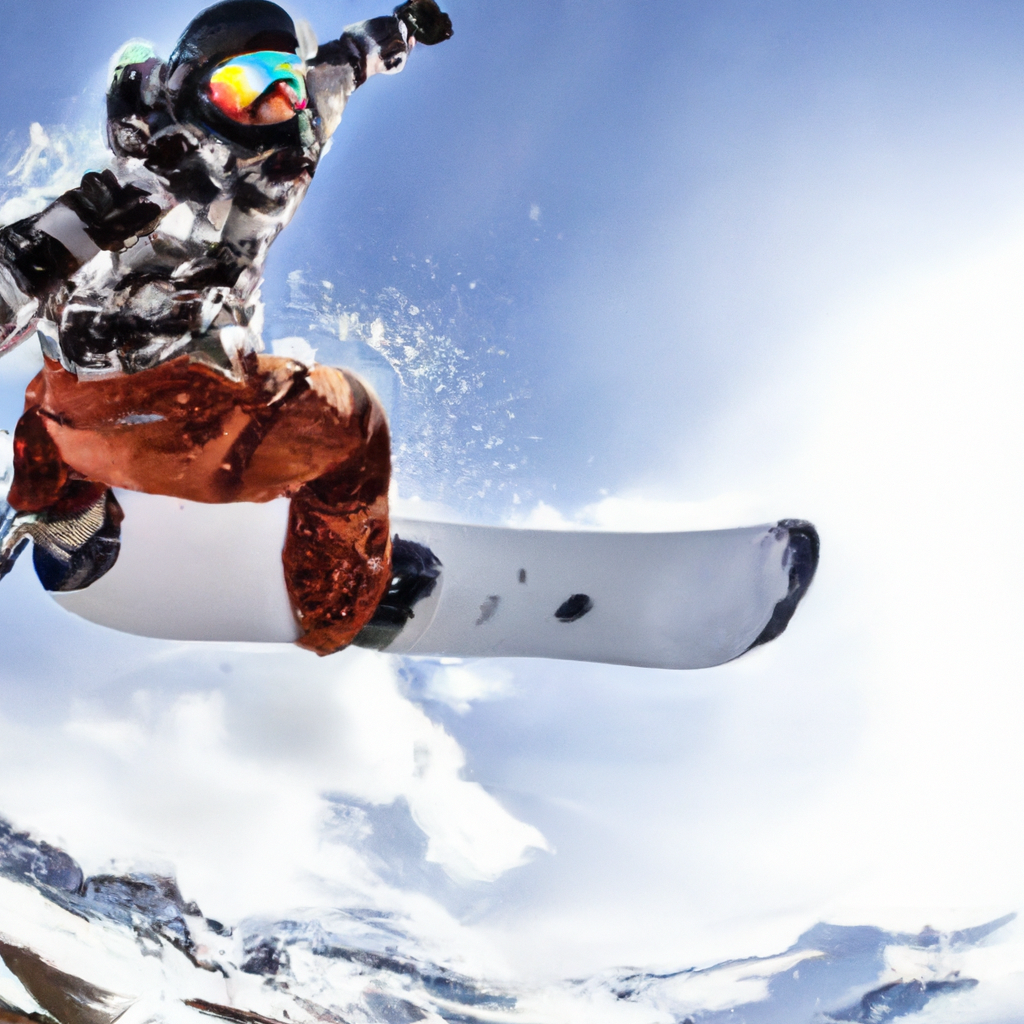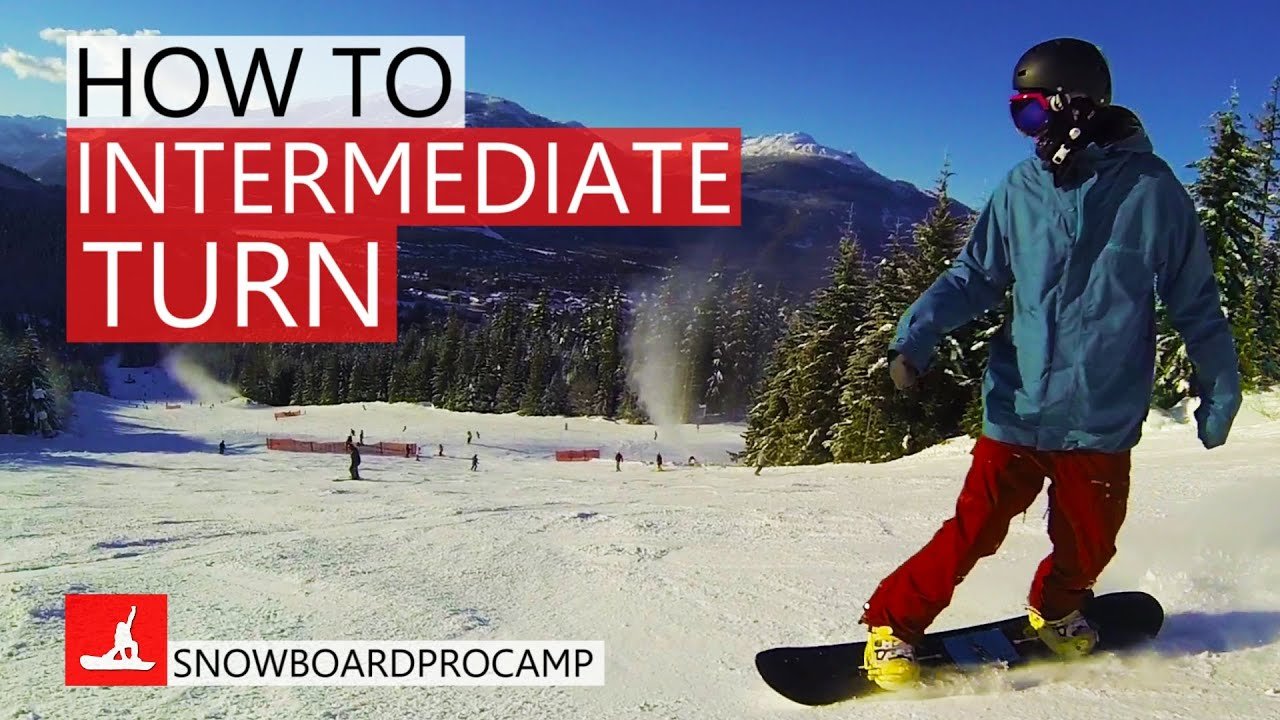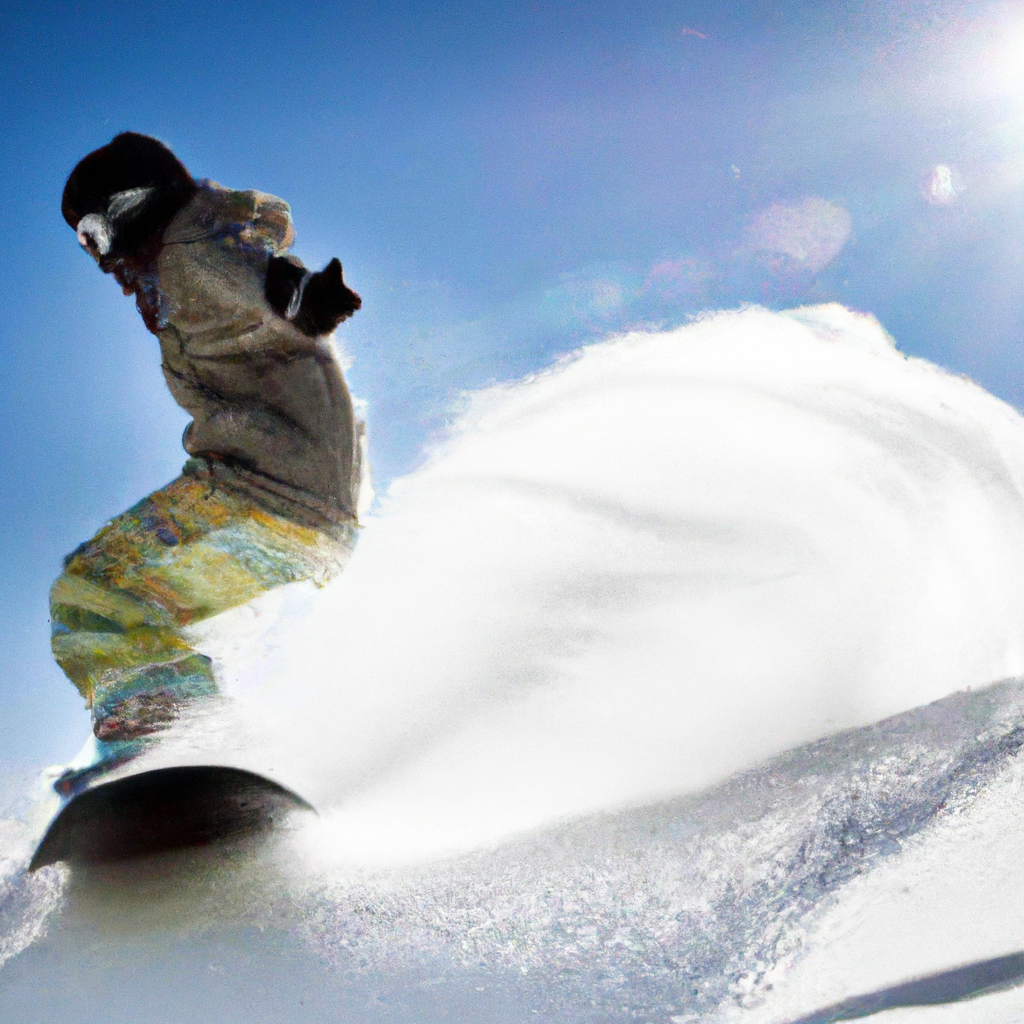
How to do Intermediate Snowboard Turns – How to Snowboard
In this video titled “How to do Intermediate Snowboard Turns,” Kevin from SnowboardProCamp.com provides some valuable tips and guidance for improving your snowboarding skills. He breaks down the process into three key parts: controlling your speed, steering your board, and shaping your turns. By mastering these skills, you’ll be able to take your beginner turns to the next level or enhance your existing intermediate turns, ultimately gaining more control on intermediate slopes. Kevin emphasizes that it takes time and practice to perfect snowboard turns, but he encourages viewers to leave any questions they may have in the comment box if they’re struggling to master these techniques.
Throughout the video, Kevin shares important techniques for each step. He advises controlling speed by spraying snow out the side of each turn and putting pressure on your back foot, steering the snowboard more aggressively using your back hand and front knee, and maintaining a fluid turn shape by keeping the snowboard on an angle downhill. By incorporating these strategies into your turns, you’ll be able to navigate intermediate slopes with ease. So, if you’re looking to improve your snowboarding skills or refine your existing turns, this video provides valuable tips and guidance for intermediate snowboard turns.

Controlling Your Speed
Spraying snow out the side of each turn
To effectively control your speed during intermediate snowboard turns, it’s essential to spray snow out the side of each turn. By doing so, you can maintain consistent speed throughout the turn. As you start the turn, put pressure on your back foot, which will effectively spray snow out the side and control your speed. It’s important to aim for spraying an equal amount of snow on each turn to ensure that your speed stays evenly controlled.
Putting pressure on your back foot
To control your speed during intermediate snowboard turns, it’s crucial to put pressure on your back foot. By doing so, you can effectively spray snow out the side, which helps in maintaining a consistent speed throughout the turn. Putting pressure on your back foot allows for better control and balance, ensuring a smooth and controlled ride.
Spraying an equal amount of snow on each turn
To control your speed evenly during intermediate snowboard turns, it’s essential to spray an equal amount of snow on each turn. This ensures that your speed is consistently controlled throughout the entire turn. Aim to maintain a balanced distribution of snow spray on both sides of each turn, allowing for better speed management and control.
Steering Your Board
Using your back hand and front knee
To steer your snowboard more effectively during intermediate turns, it’s important to utilize both your back hand and front knee. For each turn, focus on keeping your back hand over your tail. This helps in coordinating the movement of your back hand and tail, ensuring a quicker turn execution. Additionally, keeping your back hand over your tail helps maintain balance and stability while riding.
Alongside your back hand, use your front knee to steer your board. When executing heel turns, turn your knee outwards, while for toe turns, turn your knee inwards. Utilizing your front knee in this way allows for more aggressive and precise steering of each turn, enhancing control and maneuverability.
Keeping your back hand over your tail
To improve the steering of your snowboard during intermediate turns, it’s essential to keep your back hand over your tail. This positioning is crucial as it facilitates better coordination between your back hand and tail, resulting in a faster turn execution. Moreover, having your back hand over your tail helps maintain body alignment, ensuring better balance and stability.
Turning your knee out for heel turns and in for toe turns
When executing intermediate snowboard turns, focus on using your front knee to steer the board. For heel turns, turn your knee outwards, and for toe turns, turn your knee inwards. This intentional movement of your front knee helps in achieving more aggressive and precise steering of each turn. By turning your knee in the appropriate direction, you can enhance control and maneuverability while riding.
Creating a Fluid Turn Shape
Keeping your snowboard on an angle downhill
To create a fluid turn shape during intermediate snowboard turns, it’s essential to keep your snowboard on an angle downhill. Because you’re already controlling your speed throughout the turn, you don’t need to turn your snowboard completely sideways at the end of each turn. By keeping your snowboard on an angled trajectory downhill, you can seamlessly transition into the next turn.
Changing edges to transition into the next turn
A key aspect of creating fluid turn shapes during intermediate snowboard turns is smoothly transitioning from one edge to another. As you control your speed around the turn, focus on changing edges while your snowboard is on an angled trajectory downhill. This transition between the edge change and the angled movement facilitates more seamless and fluid turns, ensuring better control and speed consistency.
Practicing on Intermediate Slopes
Choosing appropriate slopes for practicing intermediate turns
When practicing intermediate snowboard turns, it’s crucial to choose appropriate slopes. Intermediate slopes provide the right balance of challenge and stability, allowing you to refine your skills without being overwhelmed. Start with slopes that match your current skill level and gradually progress to steeper slopes as you become more confident and comfortable with the techniques.
Gradually increasing difficulty
As you gain proficiency in intermediate snowboard turns, it’s important to gradually increase the difficulty level of the slopes you tackle. Challenging yourself with slightly steeper or more varied terrain helps you further develop your skills and adapt to different riding conditions. This progressive approach to increasing difficulty ensures continuous growth and improvement in your snowboarding abilities.
Seeking guidance from a snowboarding instructor
To maximize your progress in mastering intermediate snowboard turns, it’s highly beneficial to seek guidance from a qualified snowboarding instructor. An instructor can provide personalized feedback, identify areas for improvement, and offer valuable tips and techniques to help you refine your skills. Their expertise and insights can significantly accelerate your learning and confidence on intermediate slopes.

Developing Proper Stance and Balance
Maintaining a relaxed and centered stance
Maintaining a relaxed and centered stance is essential for developing proper snowboarding technique. When riding, ensure that your body is relaxed, allowing for better fluidity and responsiveness. Additionally, focus on keeping your weight centered over the board, distributing it evenly between both feet. This centered stance promotes stability, control, and efficient weight transfer during turns.
Balancing your weight evenly between both feet
Achieving balance is crucial for successful intermediate snowboard turns. Pay attention to distributing your weight evenly between both feet, ensuring a stable and controlled ride. Having a balanced weight distribution allows for smooth turn initiation, quicker edge changes, and better overall control.
Utilizing your core muscles for stability
Proper utilization of your core muscles is key to maintaining stability and balance during intermediate snowboard turns. Engage your core by keeping it strong and active while riding. This helps stabilize your torso and supports the movements of your legs and upper body. By utilizing your core muscles, you can enhance stability, control, and overall performance on the slopes.
Mastering Edge Control
Understanding the concept of edge control
Mastering edge control is crucial for intermediate snowboard turns. Understanding the concept of edge control involves being aware of the specific edges of your snowboard that engage with the snow during different phases of a turn. By controlling the pressure and release of the edges, you can effectively steer your board and adjust your speed and direction.
Practicing edge pressure and release
The practice of edge pressure and release is essential for fine-tuning your snowboarding skills. Experiment with different levels of pressure applied to the edges of your snowboard to control turns and speed. Likewise, become familiar with the release of edge pressure to smoothly transition between turns and maintain fluidity in your riding.
Using your body positioning to control your edges
Your body positioning plays a crucial role in controlling the edges of your snowboard during intermediate turns. By leaning slightly forward or backward, you can adjust the engagement of your edges with the snow. For instance, leaning into the hill distributes weight onto the heel edge, while leaning away from the hill engages the toe edge. Being mindful of your body positioning allows for better edge control, precision, and overall performance on the slopes.
Improving Turn Transitions
Focusing on smooth transitions between turns
To improve your intermediate snowboard turns, it’s important to focus on smooth transitions between turns. Smooth transitions involve minimizing any abrupt movements or disruptions that can affect your balance and flow. Concentrate on maintaining a consistent rhythm and fluidity throughout each turn, allowing for seamless transitions between one turn and the next.
Maintaining a consistent speed throughout the entire run
Maintaining a consistent speed throughout the entire run is crucial for improving turn transitions. To achieve this, pay attention to your speed control techniques, such as spraying snow out the side of each turn and properly utilizing edge control. By mastering speed control, you can ensure smooth and continuous turns without sudden changes in pace, enhancing overall flow and transition quality.
Timing your movements with the natural rhythm of the slope
An effective way to improve turn transitions during intermediate snowboarding is to time your movements with the natural rhythm of the slope. Observe the contours of the slope, the terrain, and the flow of other riders. Syncing your movements with the natural rhythm of the slope allows for better anticipation and coordination, leading to smoother and more efficient turn transitions.
Utilizing Carving Techniques
Exploring the fundamentals of carving
Carving is an advanced technique that can enhance the precision and style of your intermediate snowboard turns. It involves using your edges to create clean and precise turns while leaving distinct tracks on the snow. To explore carving, focus on properly engaging and releasing your edges, maintaining a consistent body position, and applying effective edge pressure.
Engaging your edges to create clean and precise turns
One of the key aspects of carving is effectively engaging your edges to create clean and precise turns. By consciously putting pressure on the edges, you can optimize their grip on the snow, resulting in sharper and more controlled turns. Practicing the distribution of pressure and timing your edge engagement will allow you to create cleaner lines and leave satisfying carves on the slope.
Progressing to more advanced carving techniques
Once you’ve mastered the fundamentals of carving, you can progress to more advanced techniques. This can include experimenting with different turn radii, increasing edge angles, and refining your body positioning. Advancing your carving abilities requires continued practice, dedication, and a willingness to push your snowboarding skills further.
Building Confidence on Variable Terrain
Gradually progressing to more challenging terrain
Building confidence on variable terrain involves gradually progressing to more challenging slopes and riding conditions. Start on groomed intermediate slopes and gradually introduce yourself to off-piste terrain, moguls, and varied snow conditions. Each new experience will add to your confidence as you learn to adapt and overcome different challenges.
Adapting your technique to different snow conditions
Variable snow conditions require adaptation and adjustment of your snowboarding technique. Whether it’s icy, powder, or slushy snow, understanding how to adapt your edge pressure, turn shape, and body position will ensure better control and confidence. Embrace the opportunity to ride different snow conditions to become a versatile and adaptable snowboarder.
Overcoming fear and mental barriers
Confidence-building on variable terrain also involves overcoming fear and mental barriers. A positive mindset, coupled with gradual exposure to challenging conditions, allows you to build resilience and trust in your abilities. Recognize that everyone has fears and challenges to overcome and focus on celebrating small achievements along the way.
Conclusion
Consistency and practice are key to mastering intermediate snowboard turns. By combining speed control techniques, steering your board effectively, and creating fluid turn shapes, you can gain control and confidence on intermediate slopes. Remember that snowboard turns take time and dedication, so be patient with yourself and seek guidance from a qualified instructor if needed. Embrace the learning process, practice regularly, and enjoy the exhilarating journey of becoming a skilled intermediate snowboarder.
